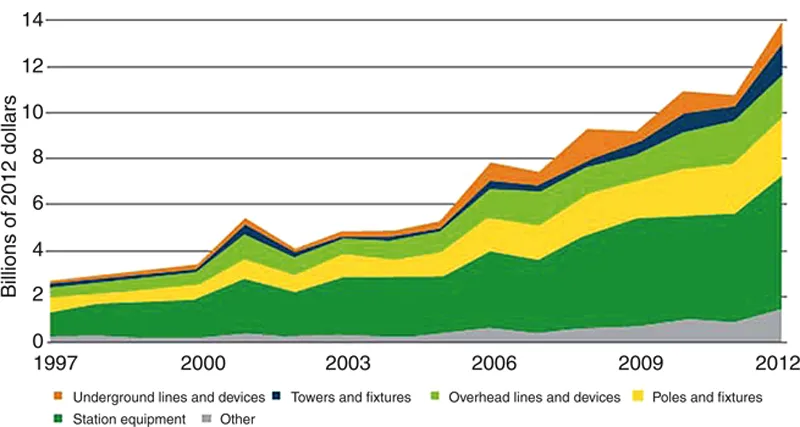
Future of Utilities - Utilities of the Future
How Technological Innovations in Distributed Energy Resources Will Reshape the Electric Power Sector
- 492 pages
- English
- ePUB (mobile friendly)
- Available on iOS & Android
Future of Utilities - Utilities of the Future
How Technological Innovations in Distributed Energy Resources Will Reshape the Electric Power Sector
About this book
Future of Utilities - Utilities of the Future: How technological innovations in distributed generation will reshape the electric power sector relates the latest information on the electric power sector its rapid transformation, particularly on the distribution network and customer side. Trends like the rapid rise of self-generation and distributed generation, microgrids, demand response, the dissemination of electric vehicles and zero-net energy buildings that promise to turn many consumers into prosumers are discussed.The book brings together authors from industry and academic backgrounds to present their original, cutting-edge and thought-provoking ideas on the challenges currently faced by electric utilities around the globe, the opportunities they present, and what the future might hold for both traditional players and new entrants to the sector.The book's first part lays out the present scenario, with concepts such as an integrated grid, microgrids, self-generation, customer-centric service, and pricing, while the second part focuses on how innovation, policy, regulation, and pricing models may come together to form a new electrical sector, exploring the reconfiguring of the current institutions, new rates design in light of changes to retail electricity markets and energy efficiency, and the cost and benefits of integration of distributed or intermittent generation, including coupling local renewable energy generation with electric vehicle fleets.The final section projects the future function and role of existing electrical utilities and newcomers to this sector, looking at new pathways for business and pricing models, consumer relations, technology, and innovation.- Contains discussions that help readers understand the underlying causes and drivers of change in the electrical sector, and what these changes mean in financial, operational, and regulatory terms- Provides thought-provoking ideas on the challenges currently faced by electric utilities around the globe, the opportunities they present, and what the future might hold for both traditional players and new entrants to the sector- Helps readers anticipate what developments are likely to define the function and role of the utility of the future
Frequently asked questions
- Essential is ideal for learners and professionals who enjoy exploring a wide range of subjects. Access the Essential Library with 800,000+ trusted titles and best-sellers across business, personal growth, and the humanities. Includes unlimited reading time and Standard Read Aloud voice.
- Complete: Perfect for advanced learners and researchers needing full, unrestricted access. Unlock 1.4M+ books across hundreds of subjects, including academic and specialized titles. The Complete Plan also includes advanced features like Premium Read Aloud and Research Assistant.
Please note we cannot support devices running on iOS 13 and Android 7 or earlier. Learn more about using the app.
Information
What is the Future of the Electric Power Sector?
Abstract
Keywords
1. Introduction
| Period | Average sales growth (%) |
| 1966–76 | 3.8 |
| 1976–86 | 1.5 |
| 1986–96 | 1.4 |
| 1996–2006 | 0.9 |
| 2003–13 | 0.3 |
| 2014–24 | 0.16 |


More, not less, grid investments by US utilities. (Source: Quadrennial Energy Review, US Department of Energy, Apr. 2015.)
Table of contents
- Cover
- Title page
- Table of Contents
- Copyright
- Dedication
- Author Biographies
- Foreword
- Preface
- Introduction
- Part I: What is Changing, What are the Implications
- Part II: Competition, Innovation, Regulation, and Pricing
- Part III: Utilities of the Future: Future of Utilities
- Subject Index